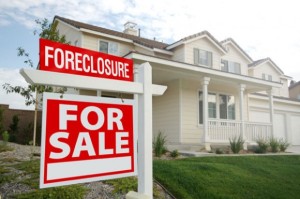
A report from CoreLogic detailing the latest national foreclosure statistics has shown that Chicagoland’s foreclosure inventory has decreased 31 percent since October 2012. The numbers show slow but steady progress, but that doesn’t mean Chicago is off the hook just yet—as of two months ago, there were still around 879,000 homes in Chicagoland that were in some stage of foreclosure. The number is down from October 2012, when 1.3 million homes were in a stage of foreclosure. Despite the improvement, Chicago has a ways to go in terms of getting its feet back on the ground in the real estate market. So what do these new figures mean for Chicago residents and foreclosures in general?
Good News for the Housing Market
The decrease of foreclosures—48,000 completed in October 2013—mark a 30 percent year-over-year decline, meaning the housing market is starting to bounce back. While 5.1% of all mortgage properties are seriously delinquent, that rate is the lowest it has been since November 2008. Fewer foreclosures mean fewer vacant homes in the Chicagoland area, although there are still plenty of homes in some stage of the foreclosure process. Still, the fewer homes in that process, the better—homes that are foreclosed on are often left abandoned and vacant after the previous owners move out, which can create other problems, including vandalism and theft to the vacant property. The signs of improvement are good, but there’s room for even more growth.
Still-Vacant Homes
Despite the drop in the foreclosure inventory, there are still a lot of homes that are in foreclosure, and those homes may be vacant for months at a time between the original owners moving out and the bank finding new buyers. The problems with vacant properties are not only can they contribute to a decline in property values, especially if more than a few homes in an area are in foreclosure or vacant, but also, they can attract criminal activity. People looking for a free place to live (squatters), vandals, arsonists, and thieves can all break in and cause damage to a vacant property. However, despite the foreclosure inventory dropping, Mark Fleming, the chief economist for CoreLogic, says that the rate is still elevated compared to pre-crisis levels, and that of the 900,000 properties still in foreclosure, a normal level would be just 25 percent of the current stock. As for whether the market will continue to improve, it’s hard to truly speculate. In the meantime, banks and homeowners whose properties lay vacant should take steps to protect the properties by installing vacant property window screens and door guards to prevent criminal damage.




